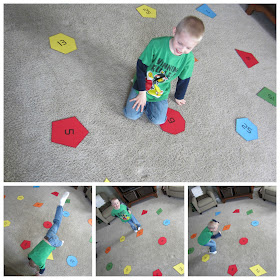My son’s teacher sent out an email to parents that kids were struggling
with dividing numbers equally on a recent math assessment. A little at-home practice was just what
my son needed!
Forever ago, a blog follower recommended Pat Hutchins’ book The Doorbell Rang. Let’s just say, I am
so glad she did! It was the perfect inspiration for this activity.
In Hutchins’ story, two children end up sharing a plate of
12 cookies with groups of children that continually ring the doorbell. Each
time more kids come over, the plate of cookies is divided into equal parts to
share with all the friends.
I printed a graphic of 12 oreo cookies to go along with the
story. Download them here.
I put them on a platter and asked my son to count them. Then we read the
first few pages of the book. When Sam and Victoria split the cookies among
themselves, I wrote on a small whiteboard:
My son took the oreos and split them, placing six on the
disposable plates I gave him. Then we turned the page to see that he had, in
fact, divided the cookies right. (YAHOO!) When Hannah and Tom come over, the
cookies must be divided up among four kids. I wrote on the whiteboard:
He split the cookies evenly and figured out 12 cookies
shared by four children, meant that each would eat 3.
The story continued like this until each child at the house
only gets 1 cookie. When it was done we tried a few more division problems
with the cookies (12 divided by 3, 10 divided by 5, 10 divided by 2, and 9
divided by 3).
Then I put the cookies away and told him he’d have to figure
out the problems without using the cookies I’d made for him. This was no easy
task. I asked him how many cookies 4 children would get if the tray had 20
cookies. To help him, I wrote "1, 2, 3, and 4" on the whiteboard and had him draw
cookies underneath each until all 20 cookies were represented. Ah-ha! “The
answer is 5, Mom!” he exclaimed excitedly.
Now I gave him a super challenge – 35 cookies divided among
5 children. Instead of drawing circles for cookies, he made tally marks.
“Seven, Mom. Seven cookies each!!!” he yelled. I was so proud of him … almost as proud as he
was of himself!






















































